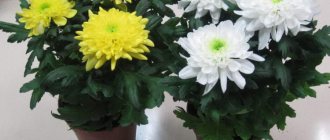Is it possible to plant daffodils and tulips together? How do tulips and daffodils get along in the garden?
What flowers should be planted to please the eye in spring?
It is even better to plant tulips, as well as muscari, hyacinths, and other bulbous plants together with daffodils. Because daffodil bulbs are poisonous, mice will not chew them. And if you plant daffodils around the circumference of a flower bed with primroses, then you can protect them from mouse raids.
Tulips and daffodils often share a small plot of land and not according to the will of man. These flowers grow in the wild in the meadows of Eurasia and it was from there that they were transferred by humans to flower beds. You can plant these plants nearby - they get along well with each other.
Each plant is approximately the same height, requires full sun and blooms in late spring and early summer. By the way, you can grow a small flower garden in a greenhouse in early spring. These flowers are unpretentious. Often daffodils and tulips are used to create compositions in flower beds. To do this, choose flowers of different varieties with multi-colored inflorescences. Contrary to rumors that they may cross-pollinate and lose their breed, this cannot happen. These flowers are planted with bulbs.
In spring, the first to please us with their beauty are representatives of such bulbous perennials as daffodils, tulips, hyacinths, crocuses and lilies. They complement each other perfectly.
In order for flowers to please us in the spring, they need to be planted before frost, preferably in September.
When forming flower beds in the front garden, you can resort to any imagination, but do not forget some of the features of certain plants.
Daffodils, for example, always grow in one direction, so it is better to plant them either along the house, or along a fence, or with other flowers. At the same time, you can take into account their protective role - poisonous daffodil bulbs can protect the bulbs of other plants from rodents, so it is beneficial to plant them around the flower bed.
Lovers of bright colors can choose this combination:
The house can be decorated as follows:
I prefer more delicate combinations where daffodils dominate.
Tulips in garden design in combination with other plants
Decorating a flower bed with only tulips is just one option. Tulips look no less attractive together with other flowers and ornamental plants. In addition, by choosing the right neighbors, you can not only emphasize the beauty of tulips, but also hide their fading stems and leaves after flowering.
Options for how to beautifully plant tulips with other plants in the garden:
To prevent yellowed tulips from spoiling the decorative appearance of the flowerbed, you can plant gypsophila next to them
To prevent yellowed tulips from spoiling the decorative appearance of the flowerbed, you can plant gypsophila next to them, which will also remove excess moisture from the soil that is undesirable for the bulbs.
When to plant daffodils in spring. Required Tools
How to plant daffodils in spring - growing methods
Daffodils grow well in open ground, although nothing prevents them from being grown in pots and containers. They are also frequent guests. The main requirement of these plants for the soil is that it be fresh. Daffodils reproduce mainly by bulbs, although sowing seeds is also possible, but this method rarely has practical application. But there are no problems with the bulbs - in one year, one single plant can grow up to six “children”!
Due to this circumstance, flowers should be planted every 2-3 years, without waiting until they become so crowded that you will not see a single flower in the entire flowerbed except the tops. Try to prepare the soil for planting in advance by digging it thoroughly and adding humus. Even low-lying areas are suitable for these flowers - they tolerate short-term flooding of the soil with melt water quite well.
When to plant daffodils in spring - is it possible?
Traditionally, daffodils are planted in the fall - September is considered the most optimal for this. However, spring planting is quite possible if you first keep the bulbs in the refrigerator for at least two months. Without such exposure, the plants will not bloom. The bulbs that you want to plant in flowerpots also need a cold period.
After digging up or purchasing bulbs, carefully inspect them in the spring for rotting or damage. Rejected ones should be destroyed, as they can be breeding grounds for various diseases. When the snow has completely melted, it’s time to plant them in the flowerbed. The bed needs to be dug up again so that the soil is as soft as possible. Daffodils are planted to a depth of about 15 cm, maintaining a distance between bulbs of up to 20 cm. It should be noted that plants planted in spring will bloom much later.
Propagation of daffodils - a whole flower bed from one bulb!
We have sorted out the question of whether it is possible to plant daffodils in the spring. Surely, you will want to propagate your favorite variety! This will be quite easy to do - as has already been noted, the bulbs of these flowers multiply quite quickly, giving an annual increase of at least three new plants. Don’t rush to plant them next year - as long as they are not too crowded, their flowers will only look better in a group. However, already in the 3rd year their nests need this process. To do this, after the leaves turn yellow, the bulbs need to be dug up and sorted.
The first step is to discard and burn all those affected by diseases and pests, and even if they look good, get rid of the soft bulbs.
The remaining ones need to be washed and kept for 15 minutes in a solution of potassium permanganate, then dried in the shade. Having put them in ventilated mesh boxes, we send them to the barn for storage until autumn. In September we return them to the ground so that they have time to take root before the cold weather sets in. If for some reason you did not manage to plant the daffodil on time, before the onset of cold weather, take care to insulate the planting site. Experienced gardeners plant these flowers in groups in a circle - so they look like bouquets.
In the spring, feeding young shoots with ammonium nitrate will not hurt; a little later, for better flowering, the soil is also fertilized with potassium and phosphorus. The same fertilizers contribute to better reproduction of the bulbs. Fresh manure as a fertilizer is strictly prohibited; all bulbous plants cannot tolerate it.
How to plant daffodils beautifully. Options for spring flower beds
In the event that you plan to place a flower garden in the partial shade of garden trees or shrubs, take bergenia, daffodils, lilies of the valley and brunner.
Lilies of the valley, charming and sophisticated, with a unique aroma, are planted taking into account the fact that their root system tends to take deep roots. Therefore, their plantings should be limited in growth and placed in the shade at a sufficient distance from other plants. This way you will provide them with a longer flowering period. Nowadays, breeders have created many varieties of these plants adapted to garden culture in colors ranging from white to soft pink, with large flowers.
Daffodils, hyacinths and tulips can be planted in continuous plantings in the form of strips, borders, arrays, parterres. In this case, the bulbs are planted so densely that when they bloom, a lawn of plants of the same type or a carpet in the form of an ornament of plants of different varieties and colors is formed.
The combination of tulips with daffodils, muscari and hyacinths looks good. Such flower beds most often decorate our streets and parks. At the end of flowering, the bulbous plants must be dug up and transplanted into spare beds or special containers in order to allow the plants to complete the growing season.
Rock gardens occupy a special place in landscape design. Such plantings can provide flowering plants from early spring to late autumn.
In order to create an alpine meadow or hill, they take as ground cover plants - awl-shaped phlox, evergreen iberis, rock alyssum, spreading arabis, saxifrage, primrose, corydalis. As beautifully flowering ones, they take special low-growing varieties with small flowers of crocuses, scillas, hyacinths, muscari, chionodoxes, galanthus, daffodils, pushkinias, and tulips.
Planting care
Caring for flowers includes watering during flowering, fertilizing the soil (2 feedings per season), removing weeds and loosening the soil. Plants need to be watered as needed and even after flowering, until the leaves wither. Crocuses do not like stagnant moisture. Watering is necessary only during the flowering period. Nature itself took care of this: in the spring there is enough melt water for plants, and in the fall rains help. Additional watering can be connected if there was little snow in the winter and the autumn is dry. In summer, the bulbs rest; they do not need moisture at this time.
Before the onset of persistently cold weather, flower beds with bulbous plants should be insulated with a thick layer of fallen leaves, spruce branches, a layer of sawdust, peat, bark, straw from 3-5 cm to 20 cm thick. Remove the protective cover in early spring, before sprouts appear.
0
( 18 ratings, average: 4.31 out of 5)
Back
Cleaning wells from silt and sand with your own capabilities
MORE
When to plant tulips and daffodils in the spring. When to Plant Tulip and Daffodil Bulbs
Bulbs can be planted from September 20 to October 15, depending on the weather. If you can’t meet these deadlines, don’t worry, plant tulips and daffodils even when the first frosts begin. The only thing is that they will bloom a little later.
To plant the bulbs you will need a bright, sun-warmed place. It is advisable that the flowerbed be covered on all sides from drafts and wind. If you plant flowers in a place that is too dark, their stems will stretch out and become brittle and brittle.
It is best to plant tulips in furrows. It is advisable to deepen the bulbs to a depth of 09 - 15 centimeters. The distance between plants should be 10 - 15 centimeters. First, thoroughly saturate the soil with water, let it pass through the ground, and then begin to deepen the bulbs. If the soil is heavy in composition, then it is necessary to pour river sand into each furrow, otherwise the roots may rot. Then all that remains is to cover the grooves with earth and go over them with a rake. If necessary, after a week, future flowers can be watered so that the root system develops well.
Daffodils and tulips can be planted not only together, but also one flower at a time. To do this, you need to dig a hole 30 centimeters deep and fill it with drainage and sand. Plant the bulbs and cover with a layer of fertile soil on top.
When planting, you need to pay attention so that the water does not stagnate on the surface of the soil, but immediately goes into the soil. Otherwise, the plants may die from rotting in the fall or winter. Former beds where carrots, beets, garlic, and calendula previously grew are well suited for planting tulips.
Immediately after planting daffodils (tulips), the flowerbed must be mulched with a small layer of rotted manure or compost. They will protect the plants from weeds, soil cracking, and the soil will be loose and breathable.
Features and varieties of tulips
Central Asia is considered the birthplace of tulips, then they spread throughout the world. Tulips of different varieties have stems of different lengths, taking this into account, they are often used in flower beds or alpine slides. These flowers come in a wide variety of colors and different shades. Starting from white to almost black. Nowadays, varieties of tulips have been developed that can be double, bell-shaped, or have spots or stripes.
On
Every gardener should know when to plant tulips and daffodils in the fall. The green mass of bulbous plants is surprisingly juicy, smooth, and tender. The flowers have a very delicate aroma, filling the garden that has not yet fully awakened with fragrance. Autumn planting of daffodils and tulips is the key to a bright spring garden.
When to plant tulips in the fall. Without haste and mistakes: when and how to plant tulips in the fall
Tulips are spring flowers that do not require complex care. Even novice gardeners have almost no problems with them, but they must be planted on time and according to all the rules. Tulips are planted in open ground at the beginning of autumn.
When should you plant tulips in open ground?
In order for tulips planted in the fall to quickly take root in a new place and bloom well, the bulbs must be properly prepared for planting, and for this they should be dug up in time (if the bulbs are not bought in a store or market). Digging is carried out after the leaves are almost completely dry, usually in the middle or end of July.
If tulips have been growing in a flower bed for many years, digging them up can be difficult: after all, every year the bulbs gradually sink into the ground, sometimes going down almost half a meter.
The dug up tulip bulbs are dried well in a shaded place. Good bulbs, fully suitable for planting, are those with a diameter of at least 2 cm. Until the day of planting, they are kept in any boxes or drawers.
Good bulbs shouldn't be too small
In most regions, tulip planting occurs in September; in the middle zone it is the second half of the month, to the north - a little earlier, to the south - a little later. If you plant the bulbs ahead of time, they may have time to germinate this year, resulting in them freezing when frost arrives. If planted late, they may not take root before cold weather arrives.
In addition to the general rule, it is worth looking at the real weather. The best time comes when the soil cools to about 10°C, and this can happen either earlier than usual or a little later.
How to plant tulips in autumn: step-by-step instructions
Tulips feel best in sunny flower beds, reliably protected from cold winds. However, slight shading is not an obstacle to their normal flowering. In the shade, tulips become very elongated, and the flowers are small and poorly colored. The soil for tulips should be moderately moist, but in no case swampy. It should be loose, moderately fertilized, but not with fresh manure. Having chosen a place for a flower garden, perform the following procedures.
- The bulbs are carefully sorted. It is better to discard those that are too small and show the slightest signs of disease. Before planting, the selected material is soaked for at least half an hour in a pink solution of potassium permanganate.
Bathing in potassium permanganate reliably disinfects bulbs
- 2-3 weeks before the intended planting, prepare a flower bed. The soil is dug deeply, weed rhizomes are removed, fertilizers are applied: per 1 m2 of area - a bucket of compost or humus, a handful of wood ash, about 40 g of nitrophoska. If the soil is too acidic, lime it. A couple of days before planting, if the weather is too dry, water the flowerbed.
The soil for tulips is dug up with no less than a shovel's bayonet
- Tulip bulbs can be planted in separate holes or in a common trench; Usually the second method is more convenient. Large bulbs are placed at a depth of at least 8 cm, the smallest - 5-6 cm. The distance between them is from 8 to 15 cm.
Sometimes several bulbs are planted in one large hole.
- Before placing the bulbs in the trench, a nutrient mixture is poured into it. It is prepared from 1 kg of wood ash and 200 g of slaked lime. Prepare about a handful of this mixture for each onion. It is poured into a trench, after which the bulbs are placed without pressing them into the soil.
If you press the bulbs, you can damage the root buds
- The bulbs placed in the trench are carefully covered with soil, and the flowerbed is leveled using a rake. In the coldest regions, mulch the soil with a 3–4 cm layer of humus.
If the autumn is too dry, you can water the plantings after a week. If severe frosts arrive unexpectedly early, it is worth covering the flowerbed with non-woven materials.
Planting tulips is a simple procedure; it is important to determine the timing correctly. Planted flowers can grow without replanting for several years; it is carried out when the overgrown plants begin to interfere with each other.
Flower bed schemes
A small composition: round, square, oblong or angular with bright colors will attract the eye in the spring, until late autumn. Place it in the partial shade of trees or near the walls of buildings. Non-aggressive flowering and decorative foliage crops are selected for proximity to bulbous plants. They must be equally demanding in terms of lighting and soil moisture. The root system of the partners should be fibrous, loose and underdeveloped, since otherwise it will interfere with the development of vegetative processes in the bulbs. Such a root system is found in arabis, aubriet, phlox, forget-me-not, and sedum.
Approximate diagram of an elongated flower bed (number of plants in pieces):
- peonies are planted in the center of the composition - 3;
- to the left of peonies – tulips – 7;
- further – liatris – 2;
- behind it – cleaning – 3;
- at the left end – host – 3;
- to the right of the peonies – dotted loosestrife – 1;
- then rhizomatous geranium – 5;
- behind it - gaillardia - 1;
- further – crocuses – 10;
- at the right end - host - 3.
Approximate diagram of a round flower bed:
- in the center of the composition, red tulips are planted in the form of a small circle;
- a strip of yellow daffodils is made around the circumference;
- the next stripe in a circle of blue hyacinths;
- behind them is a strip of woodland and mouse hyacinth in purple tones.
To create a personal composition at your discretion, you can use the following plants:
- thuja western Smaragt;
- decorative mahonia holly with evergreen foliage and dark blue fruits; it is planted in partial shade so that it does not burn in the spring sun;
- hosts (at least 3 pieces) emerge at the moment of flowering of the tulips, but after the flowering phase and drying of the tulips they rise, show their beauty and cover empty spaces;
- tulips with an average flowering period of double varieties and yellow-orange or green colors;
- Muscari from small onions will complete the composition.
If the area to create the composition is small - approximately 5 m², then 5 varieties of crops are planted, no more. The border is made from low-growing bulbous plants. If the flower beds are made up of perennial plants: ferns, peonies, phlox, hostas, gypsophila, astilbe, then small islands are left for tulips. When the bulbous flowers wilt, the partners will cover the dry leaves and prevent the flowerbed from losing its spectacular appearance. Also read our article “When to plant tulips in open ground.”
Gardeners and lovers of growing flowers strive to use the space on their site as efficiently as possible. If you have a flower bed with tulips, the problem arises of combining them with other flowers, which will delight you with their bright buds not only in the spring, but also throughout the summer months. Let’s deal with the problem of what to plant between tulips and list suitable options.
Read also Trees of the Vologda region photos and names
Is it possible to plant tulips and daffodils side by side? Read on Dacha6.ru:
Everything would be fine, but there is one serious problem: when such plants fade, the bulb remains in the ground, and an unpresentable “empty” space forms on the surface.
If perennial flowers are planted on top, problems may arise with the subsequent digging of the bulbs. If you plant annuals, then again, what kind?
Marigolds and nasturtiums grow well, but a large amount of moisture accumulates under them - and this is a clear threat of rotting to the bulbs remaining in the ground. What to do? Here are some recommendations:
- Since all bulbous plants will need to be dug up sooner or later (no matter what anyone says!), you cannot plant anything on top of them. The root system of the upper “neighbors” should be shallow and not very developed. Roughly speaking, you should not plant aruncus, peonies or darmera over daffodils at all...
- In the issue of the magazine “My Beautiful Garden” (5/99), it is recommended to combine tulips with their replacements: gypsophila (Gypsophila paniculata), autumn New Belgian aster or geranium.
- You can plant awl-shaped phlox above the daffodils. When the daffodil's flowering ends and its foliage begins to take on an unpresentable appearance, you will need to hide all the disgrace under the “carpet” of phlox. When digging, simply carefully gather the phlox branches up, dig up the bulbs and lower the cover back. On loose soils, the operation will not cause any unnecessary trouble.
- It is convenient to plant tulips in small containers (filling: bulbs below, soil on top). When these bulbous plants fade, prepared marigolds can be planted on top of them. At the moment when the container needs to be removed, simply carefully pull the marigold out of the ground along with a good root ball (the roots of this plant hold the soil well), and after the procedure is completed, place it back. When subsequently burying the container, everything is done according to a similar scheme. The marigolds will continue to bloom well and will not get sick more often from such manipulations.
- As a drought-resistant companion plant that does not require abundant watering, we can recommend eschscholzia (I generally recommend it to everyone I know; during the day the flowers are open to the sun, and in the evening - “a house under lock and key”). The plant's seeds are suitable for winter sowing.
Secrets of a beautiful flowerbed with your own hands 50 photos
How often, when we buy beautiful bags of flower seeds, we secretly hope to surprise everyone with a new beautiful flower bed in our dacha. But the result is not always pleasing: not all grown flowers look like in the picture, not all have sprouted, and for some reason those that have sprouted do not look like a luxurious flowerbed. We will tell you the simple secrets of decorating a flowerbed in a dacha with your own hands, fashion trends in garden design and show you 50 photos of the most beautiful and spectacular garden flowerbeds.
1. Flowerbeds in a natural style are very fashionable in garden design, where, along with garden flowers, ornamental grasses and grains are used, which give the flowerbed density and volume.
2. Choose natural, smooth outlines for the shape of the flower bed, which will add grace to the natural landscape in your garden.
3. To create a beautiful lush flower bed we will need: a) base plants: ornamental shrubs, tall perennial flowers; b) plants that form the body of the flower bed: bright beautiful annuals, perennials with a short flowering period and ornamental grasses that will create the density of the flower bed; c) plants that create air volume: cereals, fennel, cosmos, etc.
4. Don’t forget to use decorative perennial grasses in the flowerbed - they will help you out while some flowers are fading and others have not yet bloomed. Perennial plants with beautiful foliage even after flowering are suitable for the same purposes: peonies, irises, daylilies.
5. To make your flowerbed neat and effective with your own hands, draw a planting plan on paper. In addition, you can use ready-made flower bed designs and even take them with you to the dacha. Plant shrubs and perennials first, adding annual flowers at the next stage.
6. In order to look impressive, the plantings in the flower bed are arranged quite densely, so take into account the fact that all your plants must be suitable for the same type of soil, light regime and watering regime. It will be problematic to single out a plant that you especially love for individual care in your flower garden. 7. In order for the flowerbed to have a neat appearance, prune plants that have bloomed in a timely manner.
8. If new flowers make you happy and grow well in your soil, do not forget to collect the seeds on time. Their likelihood of germination will be many times greater than that of purchased ones. and this pleasure will cost less.
9. Write down your ideas and observations regarding the new flowerbed throughout the season. This could be combinations of new colors you like, new planting options, or discarding plants you don’t like.
10. Stability and splendor of flowering is the main rule when creating a flowerbed with your own hands. Make sure that those plants that have flowered have beautiful leaves throughout the season.
Your flowerbed at the dacha is a living composition that can change from year to year with the appearance of new interesting varieties of flowers or your bolder ambitions. Only you will understand that such a living flower garden can never be perfect, but it is you who, with your own hands, can make it the embodiment of a real fairy tale in your garden.
Of course, delicate tulips are beautiful in themselves, but just imagine what an amazing effect you can achieve if you know how to plant tulips beautifully! Using various landscape design techniques, you yourself can easily turn your site into a real work of art with the help of bright flowers of various shades. And even though the tulips in the garden bloom for only a short time, the time and effort spent on them is worth it. Don't deny yourself a wonderful spring fairy tale!
To immediately achieve the desired picture and not correct mistakes later, think about how to plant tulips in advance. And since these bulbous plants are recommended to be planted in flower beds in the fall, it is worth starting to draw up a flower garden diagram for the next season in the summer months. Schematic sketches of flower beds in color will help you find suitable combinations of plants and allow you to more clearly imagine how everything together will look in reality.
In landscape design, there are several basic techniques for how to most effectively arrange flowers and plants on a site. These techniques can also be successfully used when planting tulips.
Video about tulips in garden design
Planting in groups
No matter how much you would like to buy a couple of bulbs of the variety you like, try not to give in to this desire or buy several bulbs at once. The fact is that graceful tulips look beautiful only in group plantings, but if you plant different varieties one by one, the flowerbed will simply turn into a vinaigrette. And single specimens scattered around the site here and there may go completely unnoticed, no matter how magnificent they are.
A color spot made from several tulips of the same variety and the same shade looks much more impressive. Moreover, if you wish, you can place several of these “color spots” in one flower bed, creating a contrasting composition or using a smooth transition of shades. A monochrome flowerbed with tulips of the same color but different types will also look interesting: simple and double, simple and fringed, simple and lily, etc.
A color spot made from several tulips of the same variety and one shade looks much more impressive
Landing height
Considering the height of the different varieties, you can carefully arrange them “by height” by lining up a row of tulips with the tallest peduncles in the background, medium-height varieties in the middle, and placing dwarf tulips or other low-growing flowers in the foreground. Planting tulips in height can also be done on multi-level stepped flower beds or on earthen embankments - as your imagination tells you. The main thing is that the plants do not cover each other.
Planting according to flowering time
If you don’t want the flower bed with tulips to be empty all at once, choose so that they gradually bloom one after another. Thus, simple and double early varieties of tulips begin to bloom from the end of April; there are also early-blooming tulips among some wild species. Following the earliest varieties, Kaufmann tulips, varieties of the Triumph class and Darwin hybrids, as well as Greig and Foster tulips bloom. Throughout May, varieties of tulips from the numerous late-blooming group will open their buds. As you can see, the choice is very large; you just have to decide on the combination of tulips in one flowerbed.
Throughout May, varieties of tulips from the numerous late-blooming group will open their buds.
How to plant tulips for better flowering
Let's start with the fact that it is necessary to plant tulips in the fall, so that by winter they have time to take root in their place and put down roots. It is better to do this from approximately September 13-15 to October 5-6, while the earth is still warm enough, but already cool. They need 3-4 weeks to take root and gain a foothold in the ground.
Every year, when flowering is over and the leaves are half dry, you need to dig up the tulip bulbs, remove rotten, damaged, diseased bulbs and their children. Then you will only have healthy and high-quality planting material. They should be stored in a dry, well-ventilated place in one layer.
And now about planting tulips:
- Let's sort the bulbs by size, remove the diseased ones again, select the largest and medium-sized ones, they will give good offspring and will delight the eye in the spring with their large, beautiful flowers. This will help increase the number of bulbs of the variety you like, and you won’t have to spend money again buying new tulips for planting.
- We will treat the bulbs with slightly pink potassium permanganate to destroy pathogenic microbes and fungi, we will use growth stimulants that can be bought in the store, and we will treat the tulips with them strictly according to the instructions included with the product.
- We choose a place for planting; it should be well lit, have light, loose soil and not be exposed to strong winds. It should also not be very low. Tulips do not like excessive amounts of water.
- We prepare a flowerbed by adding mineral and organic fertilizers to the soil, including wood ash. Instead, you can buy a special complex fertilizer “for bulbous plants” in the store. And when the right time comes (see above), we proceed directly to planting tulip bulbs.
- We plant tulip bulbs in grooves of the required depth, rather than pressing them into the ground, because Small roots are often already visible on them, this is done so as not to damage them. After filling with earth, these grooves need to be thoroughly leveled so that later rainwater does not linger in them. If autumn is dry, then the planted flowers will need to be watered after about 9-10 days.











